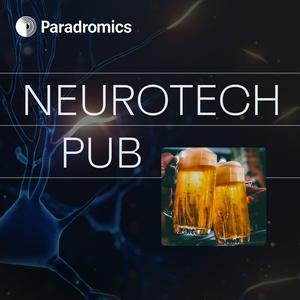We're in Heated Agreement Over Here | Connectomics Part I
Welcome back to Neurotech Pub! In this first installment of two episodes on Connectomics, host and Paradromics CEO Matt Angle kicks off a lively discussion on the rapidly accelerating research in the mapping, preservation, and reconstruction of the human connectome. We explore the ethical and legal ramifications of disruptive technology, and some of the unique challenges faced when driving innovation in emerging industries. Our guests are:
Nita Faraheny, JD, PhD, Everett Distinguished Professor of Law & Philosophy at Duke Law School, the Founding Director of Duke Science & Society, the Faculty Chair of the Duke MA in Bioethics & Science Policy, and principal investigator of SLAP Lab.
Kenneth Hayworth, PhD, President and Co-Founder of the Brain Preservation Foundation, Senior Scientist at the Howard Hughes Medical Institute’s Janelia Farm Research Campus (JFRC)
Robert McIntyre, CEO at Nectome
As an exciting new development since the recording of this episode, Nita recently published a book, The Battle for Your Brain, which examines many topics in neuroethics, from Connectomics to Brain-Computer Interfaces. It is currently available on Amazon.Keep an eye out for part two in this series, which will take a deep dive into the latest technical and engineering innovations in the connectomics ecosystem. Coming soon!Please be advised that this episode contains a brief discussion of assisted suicide in a medical setting.Show Notes: 0:00 | Episode Intro 1:16 | Nita A. Farahany, JD, PhD1:21 | Kenneth Hayworth, PhD1:27 | Robert McKintyre, CEO, Nectome1:56 | Meeting of the minds 2:53 | Aldehyde-stabilized cryopreservation wins final phase of brain preservation prize3:56 | The Brain Preservation Foundation4:09 | Documentary series on the Brain Preservation Foundation5:21 | Letter of Support for Aldehyde Stabilized Cryopreservation (and ‘next steps’ caveats)5:51 | Nita's 2018 Neuroethics Ted Talk 5:54 | International Neuroethics Society6:25 | Connectomics & new paths in neuroscience 8:10 | Allen Institute for Brain Science8:47 | A connectome and analysis of the adult Drosophila central brain9:33 | A visual intro to synaptic imaging in connectomics10:28 | The structure of the nervous system of the nematode Caenorhabditis elegans 11:16 | Mouse Connectome Project at CIC14:59 | Cryonics controversy 19:00 | Death, taxes, and synapses 20:51 | Uniform Law Commission21:08 | The Uniform Determination of Death Act24:25 | Watch Altered Carbon on Netflix25:49 | Understanding the “Loss of Chance” Doctrine 37:13 | Understanding Physician-Assisted Death, or ‘Death with Dignity’ 40:21 | Euthanasia in the Netherlands46:01 | Autonomy, Dignity, and Consent to Harm, Rutgers Law Review Want More?Follow Neurotech Pub on TwitterFollow Paradromics on Twitter, LinkedIn, and InstagramFollow Matt on LinkedIn and Twitter


